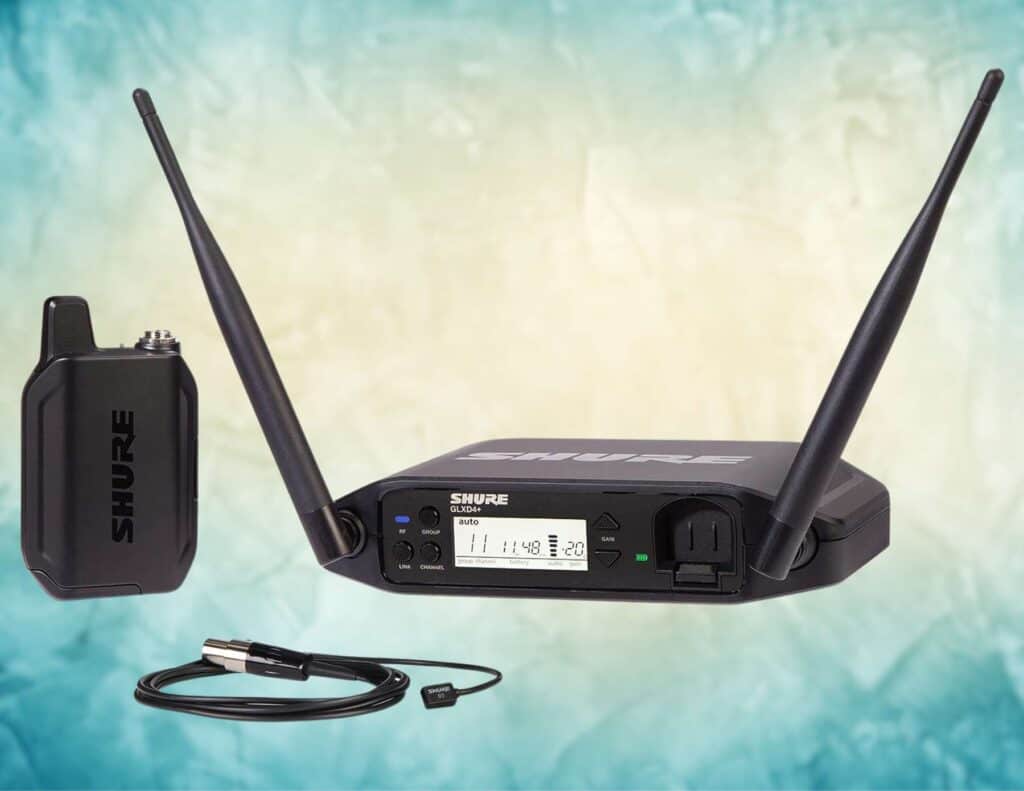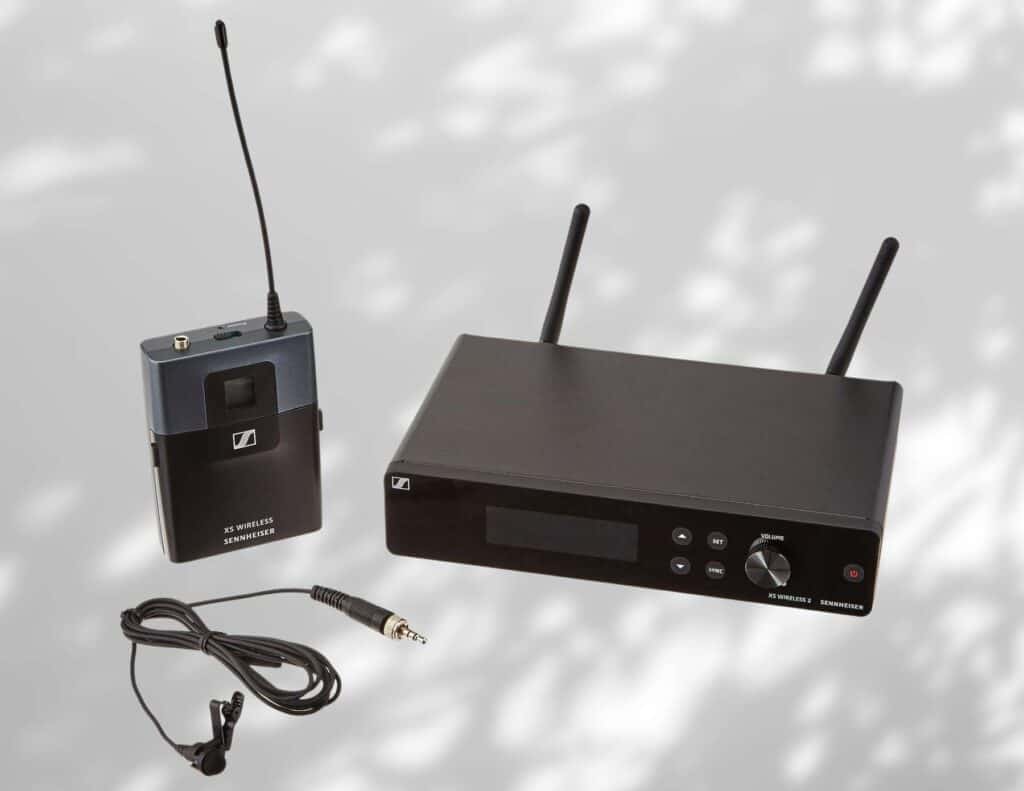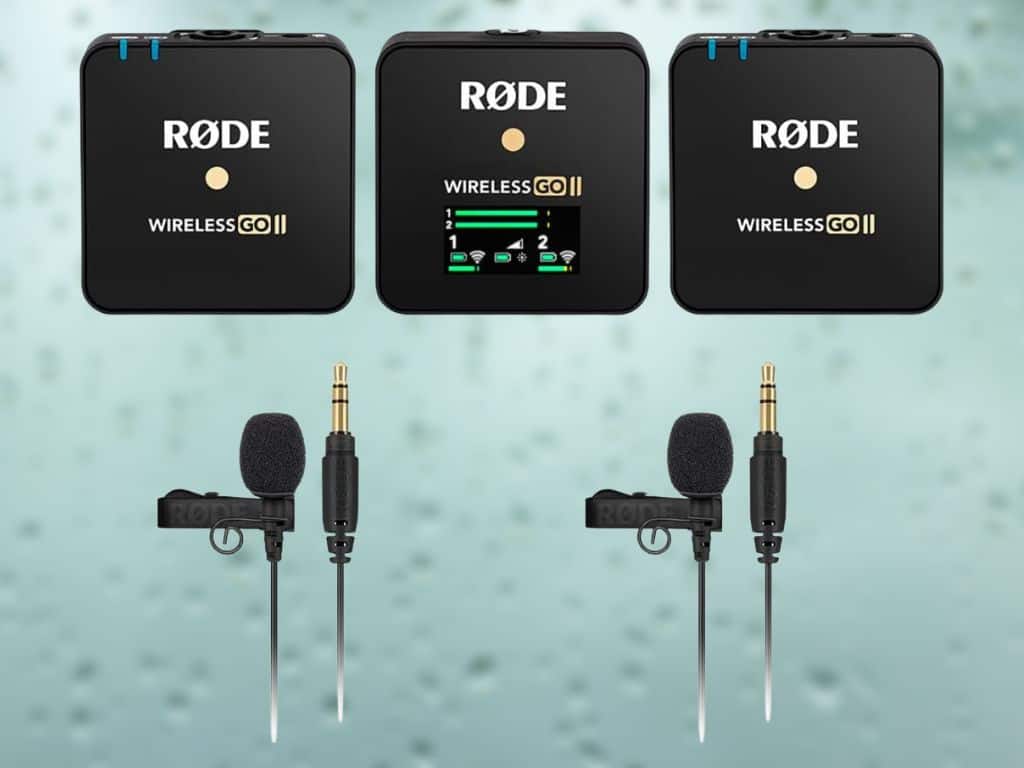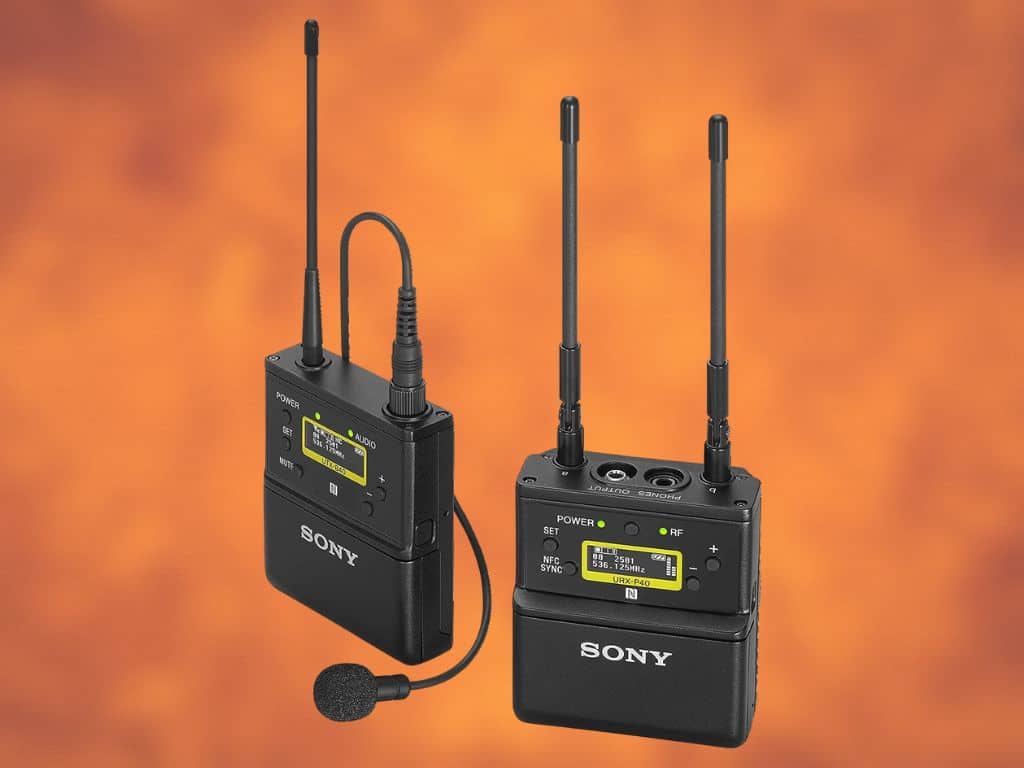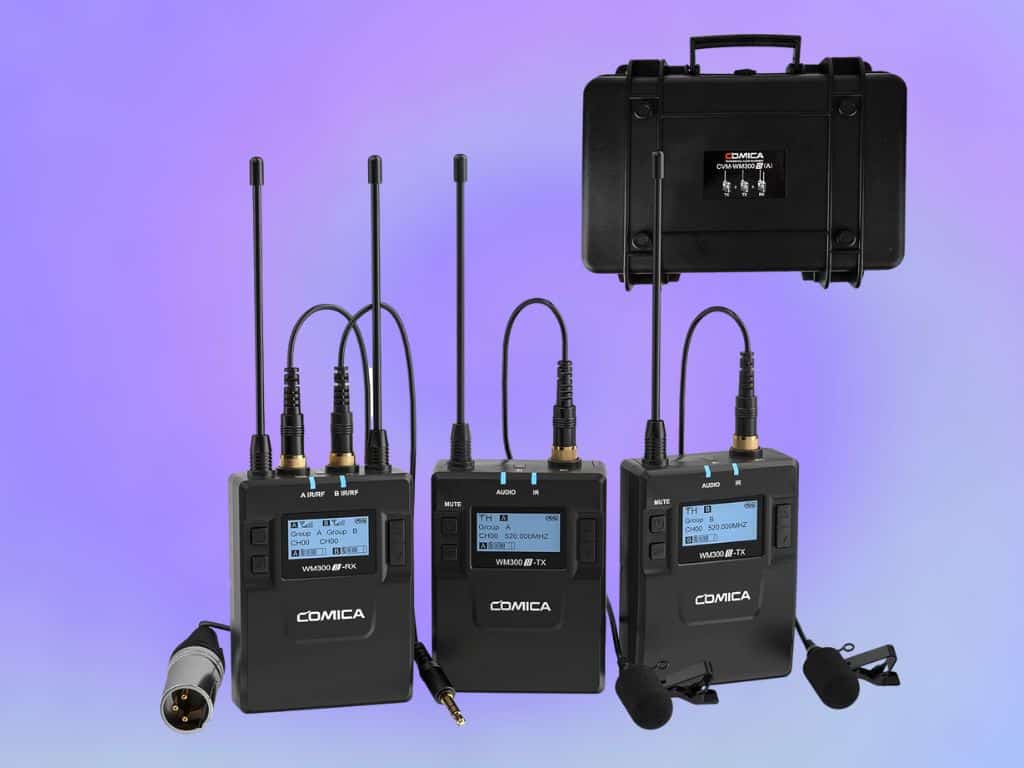
When it comes to recording audio, having the right equipment can make all the difference. One essential tool for capturing clear and natural sound having one of the best wireless lavalier microphones.
These small, unobtrusive devices clip onto clothing and allow for hands-free recording, making them popular among videographers, journalists, and public speakers.
However, with so many options on the market, it can be challenging to know which wireless lavalier microphone is the best fit for your needs.
Key Takeaways
- Understanding the different types of wireless lavalier microphones and their compatibility with devices is essential when choosing the right one for your needs.
- Features to consider when selecting a wireless lavalier microphone include sound quality, durability, and the availability of accessories and add-ons.
- Top brands and models, as well as affordable options, are available for both amateur and professional use.
Table of Contents
Best Wireless Lavalier Microphones that Professionals Love
Shure GLXD14/93
The system’s exceptional digital wireless audio ensures clear and captivating sound, intelligently circumventing interference for reliable wireless freedom.
The GLX-D+ Dual Band Digital Wireless system is a significant upgrade from its predecessor, offering several new features such as dual-band operation in both 2.4 and 5.8GHz, enhanced battery life, and multiple receiver options.
The new dual-band wireless technology offers a robust and consistent signal. It scans both the 2.4 and 5.8GHz bands, automatically choosing the cleanest channel. The system boasts more than double the bandwidth of previous versions, providing a failsafe against dropouts that might otherwise interrupt a performance.
The GLX-D+ Dual Band Digital Wireless system offers a wealth of features:
- New dual-band operation in both 2.4 and 5.8GHz, with automatic scanning for the cleanest channel.
- Enhanced battery life with smart rechargeability, providing up to 12 hours of runtime, and quick charging capabilities.
- Multiple setup options, including rack-mount, tabletop, and guitar pedal receiver options, along with a wide selection of microphones.
- Exceptional digital wireless audio, which intelligently avoids interference.
- User-friendly setup and smart frequency management, which continuously monitors the spectrum and moves to a clean channel if interference is detected.
- Improved RF performance for multiple system installations, supporting up to 16 half-rack systems (Frequency Manager sold separately).
Pros:
- Exceptional audio clarity and reliable wireless freedom due to the new dual-band technology.
- Enhanced battery life and quick charging capabilities offer extended use and convenience.
- The system operates in a license-free frequency range, removing concerns about frequency coordination when traveling.
- Multiple setup options cater to various user needs.
Cons:
- The system is not backward compatible with GLX-D or GLX-D Advanced.
- Frequency Manager (GLXD+ FM), required for multiple system installations, is sold separately.
- Some customers may find the number of options and features overwhelming.
Sennheiser Pro Audio XSW 2-ME2-A
The Sennheiser Pro Audio XSW 2-ME2-A is a compelling choice for those seeking a robust and flexible wireless audio system.
The system features an unobtrusive, unidirectional clip-on microphone and a compact bodypack transmitter, both designed to facilitate hands-free operation. This feature, combined with the system’s black color scheme, makes the XSW 2-ME2-A as discreet as it is functional.
Boasting a true diversity receiver housed in durable metal with external antennas, the system ensures reliable reception and signal quality.
The XSW 2-ME2-A also offers full tunability over a wide range of UHF frequencies, supporting up to 12 simultaneous channels. This versatility, coupled with automatic frequency management and synchronization via remote channel, makes setup straightforward and user-friendly.
Additionally, the package includes a rackmount kit, providing everything you need for a professional-grade audio setup.
The Sennheiser Pro Audio XSW 2-ME2-A is a wireless system with several key features:
- An unobtrusive clip-on microphone for hands-free operation and a compact bodypack transmitter.
- A true diversity receiver with a robust metal housing and external antennas.
- Full tunability over a wide range of UHF frequencies, with support for up to 12 simultaneous channels.
- Automatic frequency management and synchronization via remote channel for effortless setup.
- A rackmount kit is included with the package.
Pros:
- Hands-free operation facilitated by the unidirectional, clip-on lavalier microphone.
- Robust build quality with a metal-housed receiver and external antennas for improved reception.
- Wide range of tunable UHF frequencies allows for flexible usage and supports up to 12 simultaneous channels.
- Ease of setup thanks to automatic frequency management and synchronization.
Cons:
- Weighing in at 4.7 pounds, the system might be considered heavy for some users.
- The system’s numerous features might be overwhelming for some users.
- The included components count is just one, which may not suit users looking for a more comprehensive package.
Rode Wireless GO 2
The Rode Wireless GO 2 wireless microphone system is a compact, portable solution designed to meet a wide range of audio needs.
Its USB and 3.5mm jack connectivity, coupled with a multi-colored design and included microphone, make it a versatile option for varied use cases. Its standout feature is a dual-channel setup, optimized for short-range operation in crowded conditions.
Despite this focus on close-quarters use, it still boasts an impressive range of up to 200m in line-of-sight conditions.
For maximum convenience, clothing clips are provided for both the transmitters and the receiver. The system features a Lavalier GO – a condenser lavalier microphone specifically designed for Rode’s Wireless GO II compact wireless system.
The Rode Wireless GO 2 wireless microphone system has several key features:
- A portable and compact dual-channel wireless microphone system.
- Optimized for short-range operation in crowded conditions, but also capable of reaching up to 200m in line-of-sight conditions.
- Uses Series IV 2.4GHz digital transmission with 128-bit encryption for enhanced reliability.
- The transmitters can be used with lavalier or headset microphones, or independently, thanks to built-in omnidirectional mics.
- Clothing clips on both the transmitters and receiver for maximum convenience.
- Lavalier GO – Condenser lavalier microphone for Rode’s Wireless GO II compact wireless system.
- Durable Kevlar-reinforced cable, able to withstand the rigors of daily use.
- Ultra-small 4.5mm size allows for discreet placement.
- Comes with a super-rugged mounting clip with built-in cable management.
Pros:
- Portability and compactness make it an excellent choice for on-the-go use.
- The system is designed to work optimally even in crowded environments.
- Enhanced security and reliability with 128-bit encrypted digital transmission.
- The inclusion of clothing clips on the transmitters and receiver enhances convenience.
- Durable construction, featuring a Kevlar-reinforced cable and rugged mounting clip.
Cons:
- The system is primarily optimized for short-range operation, which may limit its functionality in some scenarios.
- The multitude of features might be overwhelming for some users.
- Some users might prefer a more straightforward setup without the need for built-in microphones on the transmitters.
Sony UWP-D21
The Sony UWP-D21 is a powerful and sophisticated wireless audio system, designed with exceptional functionality for both indoor and outdoor uses.
At the heart of the UWP-D21 system is Sony’s Digital Audio Processing, which delivers superb sound quality. The package includes a URX-P40 Portable Receiver, ECM-V1BMP Omni-directional Lavalier Mic, and UTX-B40 Bodypack Transmitter.
The system not only provides high-quality sound but also ensures highly reliable transmission through its advanced DSP circuit and true double tuner/antenna diversity per channel.
Despite its extensive feature set, the system is lightweight, weighing in at just 230.2 grams, which enhances its convenience and portability.
The Sony UWP-D21 wireless audio system includes several key features:
- High-visibility OLED display for indoor/outdoor use.
- “NFC SYNC” for quick and easy frequency setting with a single button scan.
- True double tuner/antenna diversity for reliable and stable signal reception.
- Wide bandwidth of up to 72MHz and 2,772 frequencies in 25kHz steps.
- Sony’s Digital Audio Processing for superb sound quality.
- Includes a URX-P40 Portable Receiver, ECM-V1BMP Omni-directional Lavalier Mic, and UTX-B40 Bodypack Transmitter.
- Advanced DSP circuit for processing audio and highly reliable transmission.
- Simple setup and operation with NFC pairing, transmitter sync from the receiver, and pre-programmed channel plans.
- Frequency range of 470 MHz to 542 MHz (UHF-TV channels 14 to 25).
- Supplied accessories: windscreen, mic holder clip, cold shoe mount adaptor, belt clip, LXW-BMP conversion output cable for the receiver, stereo mini plug-BMP conversion cable.
Pros:
- High-visibility OLED display ensures ease of use in various lighting conditions.
- Quick and easy frequency setting with “NFC SYNC”.
- Reliable and stable signal reception due to true double tuner/antenna diversity.
- Wide bandwidth and a large number of frequencies provide flexibility for various audio needs.
- Delivers superb sound quality with Sony’s Digital Audio Processing.
- Lightweight and portable, weighing just 230.2 grams.
Cons:
- The multitude of features and options might be overwhelming for some users.
- Some users might find the NFC SYNC feature unnecessary or redundant.
- The system’s frequency range might not cover all possible usage scenarios.

Comica Dual Wireless Lavalier Microphone System
The Comica wireless microphone system offers 96 channels, enabling multiple devices to work simultaneously.
Users can adjust the RF signal strength or use the auto-scan function for quick channel selection. Furthermore, it supports both A/B groups and features a low cut filtering mode as well as manual and auto IR sync capabilities. The system is designed to be compatible with a variety of devices including voice recorders, audio mixers, preamps, camcorders, cameras, and smartphones.
The Comica wireless microphone system is designed to perform well over long distances, with a working distance of up to 394 feet in open areas, and up to 263 feet in areas with barriers.
Constructed from metal, the CVM-WM300 model offers excellent shielding, contributing to its overall durability. It also allows users to adjust the RF signal strength depending on the working distance.
The Comica wireless microphone system includes several key features:
- 96 channels for multiple devices working together.
- Adjustable RF signal strength or auto-scanning for quick channel selection.
- Low cut filtering mode and Manual / Auto IR sync.
- Built-in rechargeable lithium battery, with up to 10 hours of work time.
- Real-time monitoring at both the transmitter and receiver ends.
- Mono/Stereo Output modes switchable.
- Long working distance of up to 394 feet in open areas and 263 feet in barrier areas.
- Full-metal manufacturing for excellent shielding.
- Power mode options depending on the working distance.
Pros:
- Multiple devices can work together simultaneously, thanks to the 96-channel system.
- Long battery life with convenient USB charging.
- Long working distance makes it suitable for various usage scenarios.
- Real-time monitoring at both ends ensures reliable operation.
- Adjustable RF signal strength improves audio quality and reduces power consumption.
Cons:
- The system’s numerous features might be overwhelming for some users.
- At 2.1 kilograms, the system might be considered heavy for some users.
- While the full-metal manufacturing provides excellent shielding, it might add to the overall weight of the system.
- Some users might find the system’s multi-functionality unnecessary or redundant.
Accessories and Add-Ons for Wireless Lavalier Mics
When it comes to wireless lavalier microphones, there are a variety of accessories and add-ons that can enhance their performance and usability. Here are some of the most common accessories and add-ons to consider:
Windscreen
A windscreen is a foam cover that fits over the microphone to reduce wind noise and pops. It can be especially useful for outdoor recordings or in windy environments.
Some lavalier microphones come with a foam windscreen included, but it may be worth investing in a higher-quality windscreen for better performance.
Pop Filter
A pop filter is a mesh screen that fits over the microphone to reduce popping sounds caused by plosives (such as “p” and “b” sounds). It can be especially useful for vocal recordings, such as interviews or podcasts.
Make sure you check if the product you intend to purchase already has a pop filter, as these are often included in the more expensive systems.
Windshield
A windshield is a furry cover that fits over the microphone to reduce wind noise and pops. It can be especially useful for outdoor recordings or in windy environments.
Although some lavalier microphones include a foam windscreen, considering an upgrade to a higher-quality windshied could yield improved performance.
Foam Windscreen
A foam windscreen is a foam cover that fits over the microphone to reduce wind noise and pops. It can be especially useful for outdoor recordings or in windy environments.
While certain lavalier microphones are supplied with a foam windscreen, purchasing a superior foam windscreen could potentially enhance their performance.
Kevlar-Reinforced Cable
A kevlar-reinforced cable is a cable that is reinforced with kevlar fibers to make it more durable and resistant to wear and tear. It can be especially useful for lavalier microphones that will be used in high-activity situations, such as sports broadcasting or live events.
Understanding Lavalier Microphones
Lavalier microphones, also known as lapel mics, are small microphones that can be clipped onto clothing or attached to the body. They are often used in film and television production, as well as in live events, to capture clear and high-quality audio from the speaker or performer.
Lavalier microphones are typically omnidirectional, meaning they can pick up sound from all directions. This makes them ideal for capturing dialogue or speeches, as they can capture the speaker’s voice regardless of their position or movement.
The small size and discreet design of lavalier microphones make them a popular choice for on-camera interviews, as they can be easily hidden from view. They are also commonly used in theater productions, where actors can wear them to amplify their voices and ensure that they are heard by the audience.
Types of Wireless Lavalier Microphones
When it comes to wireless lavalier microphones, there are a few different types to consider. These microphones can be broken down based on their transmitter and receiver, as well as the frequency range they operate on.
Transmitter and Receiver
One type of wireless lavalier microphone includes a separate transmitter and receiver. The transmitter is attached to the microphone itself, while the receiver is connected to the recording device. This type of setup can offer greater flexibility and range, but it also requires more equipment and can be more expensive.
Another type of wireless lavalier microphone includes a built-in transmitter and receiver. This all-in-one design can be more convenient and compact, but may not offer the same range as a separate transmitter and receiver.
Frequency Range
Wireless lavalier microphones also operate on different frequency ranges, typically either VHF or UHF. VHF operates on a lower frequency range and is generally less expensive, but can be more prone to interference. UHF operates on a higher frequency range and typically offers better sound quality and less interference, but can be more expensive.
Bodypack Transmitter
Many wireless lavalier microphones also include a bodypack transmitter, which allows the microphone to be worn on the body while the transmitter is clipped to a belt or other clothing. This can be a convenient option for performers or speakers who need to move around while using the microphone.
Compatibility with Devices
When choosing a wireless lavalier microphone, it’s important to consider its compatibility with your devices. Some microphones are designed specifically for certain devices, while others are more versatile and can be used with a range of devices.
If you’re using an iPhone or iPad, it’s important to choose a microphone that is compatible with iOS devices. The Rode SmartLav+ is a popular choice for iPhone users, as it connects directly to the headphone jack and can be used with the Rode Rec app to record high-quality audio.
For Android users, it’s important to choose a microphone that is compatible with your specific device. Many microphones use a standard 3.5mm jack, which should work with most Android smartphones and tablets. However, some newer devices may require an adapter to use a standard microphone.
If you’re using a DSLR camera or video camera, it’s important to choose a microphone that can be easily mounted and connected to your camera. Many wireless lavalier microphones come with mounting clips and adapters to connect to a camera’s microphone input.
Usage in Different Scenarios
Wireless lavalier microphones are versatile and can be used in various scenarios, from interviews to music gigs. Here are some of the scenarios where a wireless lavalier microphone can be useful:
Interviews
A wireless lavalier microphone can be a great tool for conducting interviews. It allows the interviewer to move around freely without worrying about cables, while still capturing clear audio from the interviewee. The microphone can be attached to the interviewee’s clothing, making it unobtrusive and easy to use.
Vlogging
For vloggers, a wireless lavalier microphone can be a game-changer. It allows the vlogger to record audio with high quality, even in noisy environments, and without having to hold a microphone. This makes it easier to focus on the content of the vlog, rather than worrying about audio quality.
DJ/Broadcast
For DJs and broadcasters, a wireless lavalier microphone can be a great addition to their setup. It allows them to move around freely while still being able to communicate with their audience or co-hosts. The microphone can be attached to the clothing or equipment of the DJ or broadcaster, making it easy to use and unobtrusive.
Vlogging/Youtube
For vloggers and YouTubers, a wireless lavalier microphone can be a great way to improve the audio quality of their videos. It allows them to capture clear audio, even in noisy environments, and without having to hold a microphone. This makes it easier to focus on the content of the video, rather than worrying about audio quality.
Podcast
For podcasters, a wireless lavalier microphone can be a great tool for recording audio. It allows the podcaster to move around freely while still capturing clear audio. The microphone can be attached to the clothing of the podcaster, making it unobtrusive and easy to use.
Presentations/Speeches
For presenters and speakers, a wireless lavalier microphone can be a great tool for delivering clear audio to their audience. It allows the presenter or speaker to move around freely while still being heard clearly. The microphone can be attached to the clothing of the presenter or speaker, making it unobtrusive and easy to use.
Music Gigs
For musicians, a wireless lavalier microphone can be a great tool for capturing clear audio during performances. It allows the musician to move around freely while still being heard clearly. The microphone can be attached to the clothing or instrument of the musician, making it unobtrusive and easy to use.
Features to Consider
When looking for the best wireless lavalier microphone, there are several features to consider to ensure you get the best value for your money. Here are some key factors to keep in mind:
Frequency Response
The frequency response of a microphone refers to the range of frequencies it can pick up. Look for a lavalier microphone with a wide frequency response, as this will allow it to capture a broader range of sound.
Sensitivity
The sensitivity of a microphone refers to how well it can pick up sound. A more sensitive microphone will be able to pick up quieter sounds, while a less sensitive microphone may miss some sounds altogether.
Polar Pattern
The polar pattern of a microphone refers to the direction from which it can pick up sound. An omnidirectional polar pattern will pick up sound from all directions, while a directional polar pattern will only pick up sound from a specific direction.
Value
Consider the overall value of the lavalier microphone you are considering. Look for a microphone that offers a good balance of features and price.
Phantom Power
Some lavalier microphones require phantom power to operate. Make sure to check if your recording device or mixer can provide phantom power before purchasing a microphone that requires it.
Signal-to-Noise Ratio
The signal-to-noise ratio of a microphone refers to the amount of signal (sound) compared to the amount of noise (unwanted sound). A higher signal-to-noise ratio is generally better, as it means the microphone will pick up more of the desired sound and less background noise.
Pickup Patterns
Consider the pickup pattern of the microphone and whether it suits your needs. An omnidirectional pickup pattern is ideal for capturing sound from all directions, while a directional pickup pattern is better for isolating sound from a specific direction.
Max SPL
The maximum sound pressure level (SPL) that a microphone can handle is an important consideration if you plan to record loud sounds. Look for a microphone with a high max SPL if you plan to record loud music or other loud sounds.
Frequency Response Chart
Check the frequency response chart of the microphone to see how it performs across different frequencies. This can help you determine if it is suitable for your recording needs.
EQ Settings
Some lavalier microphones come with EQ settings that allow you to adjust the sound to your liking. If you plan to use your microphone for a specific purpose, such as recording vocals or instruments, look for a microphone with EQ settings that can help you achieve the desired sound.
Powering Your Wireless Lavalier Microphone
Wireless lavalier microphones can be powered in different ways, depending on the model and brand. Some microphones use AA batteries, while others use rechargeable batteries. In this section, we will discuss the different ways to power your wireless lavalier microphone.
AA Batteries
Many wireless lavalier microphones use AA batteries as a power source. AA batteries are readily available and can be easily replaced when they run out of power. They are also inexpensive compared to other battery types.
Before using AA batteries, make sure to check the manufacturer’s instructions for the recommended type of battery. Some microphones may require alkaline batteries, while others may work with rechargeable batteries.
Rechargeable Batteries
Some wireless lavalier microphones come with rechargeable batteries. These batteries can be charged using a USB cable or a charging dock. Rechargeable batteries are more environmentally friendly than disposable batteries, and they can save you money in the long run.
When using rechargeable batteries, make sure to charge them fully before using them. It is also important to follow the manufacturer’s instructions for charging and storing the batteries. Overcharging or storing batteries in extreme temperatures can damage them and reduce their lifespan.
Battery Life
The battery life of your wireless lavalier microphone will depend on several factors, such as the type of battery used, the microphone’s power consumption, and the operating environment. Some microphones have a longer battery life than others, so it is important to consider this when choosing a microphone.
To conserve battery life, turn off your microphone when it is not in use. You can also use a microphone with a low battery indicator to know when it is time to replace or recharge the battery.
Frequently Asked Questions
What are some of the best budget wireless lavalier microphones available?
Some of the best budget wireless lavalier microphones available include the Movo WMIC80, the Fifine K037B, and the Comica CVM-WM100 Plus. These microphones offer good sound quality and reliable performance at an affordable price.
Which wireless lavalier microphone is best for Android devices?
The Rode SmartLav+ is a popular choice for Android users. It is a high-quality lavalier microphone that connects directly to your smartphone’s headphone jack, and is compatible with a range of recording apps.
What is the top wireless lavalier microphone for iPhone?
The Shure MV88 is a top-rated wireless lavalier microphone for iPhone. It is a compact and versatile microphone that connects directly to your iPhone’s Lightning port, and comes with a range of features and accessories to help you capture high-quality audio.
What are the best wireless lavalier microphones for filmmaking?
The Sennheiser AVX-ME2 and the RodeLink Filmmaker Kit are two of the best wireless lavalier microphones for filmmaking. They offer excellent sound quality and range, and are designed to be easy to use and reliable in a range of shooting environments.
What is the best lapel microphone for preaching?
The Shure BLX14/CVL is a popular choice for preachers and other public speakers. It is a wireless lavalier microphone that offers clear and natural sound, and comes with a range of features and accessories to help you get the most out of your sermons and speeches.
What is the top wireless lavalier microphone for DSLR cameras?
The Sennheiser EW 112P G4 is a top-rated wireless lavalier microphone for DSLR cameras. It offers excellent sound quality and range, and is designed to be easy to use and reliable in a range of shooting environments.

